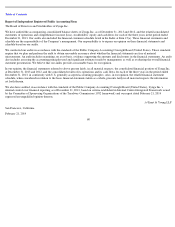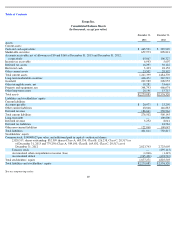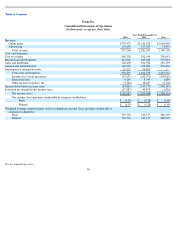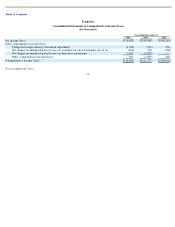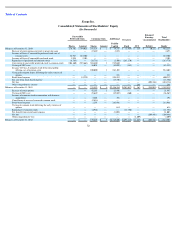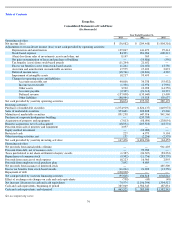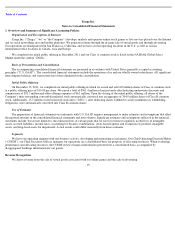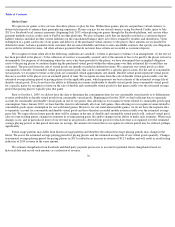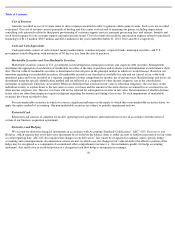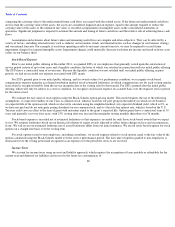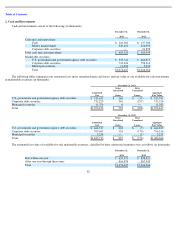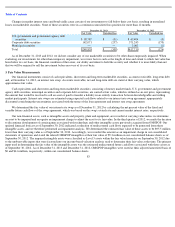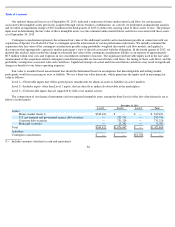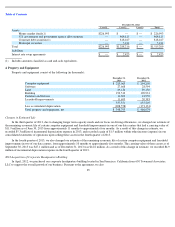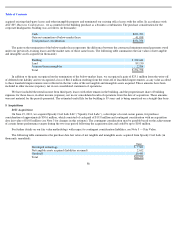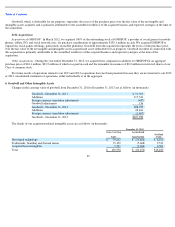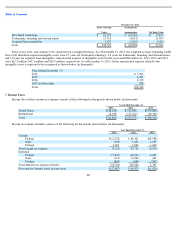Zynga 2013 Annual Report Download - page 82
Download and view the complete annual report
Please find page 82 of the 2013 Zynga annual report below. You can navigate through the pages in the report by either clicking on the pages listed below, or by using the keyword search tool below to find specific information within the annual report.
Table of Contents
Cost of Revenue
Amounts recorded as cost of revenue relate to direct expenses incurred in order to generate online game revenue. Such costs are recorded
as incurred. Our cost of revenue consists primarily of hosting and data center costs related to operating our games, including depreciation;
consulting costs primarily related to third-party provisioning of customer support services; payment processing fees; and salaries, benefits and
stock-based expense for our customer support and infrastructure teams. Cost of revenue also includes amortization expense related to purchased
technology of $11.3 million, $38.5 million and $28.4 million for the years ended December 31, 2013, 2012 and 2011, respectively.
Cash and Cash Equivalents
Cash equivalents consist of cash on hand, money market funds, commercial paper, corporate bonds, municipal securities, and U.S.
government-issued obligations with maturities of 90 days or less from the date of purchase.
Marketable Securities and Non-Marketable Securities
Marketable securities consist of U.S. government-issued obligations, municipal securities and corporate debt securities. Management
determines the appropriate classification of marketable securities at the time of purchase and evaluates such determination at each balance sheet
date. The fair value of marketable securities is determined as the exit price in the principal market in which we would transact. Based on our
intentions regarding our marketable securities, all marketable securities are classified as available-for-sale and are carried at fair value with
unrealized gains and losses recorded as a separate component of other comprehensive income, net of income taxes. Realized gains and losses are
determined using the specific-identification method and are reflected as a component of other income (expense), net in the consolidated
statements of operations when they are realized. When we determine that a decline in fair value is other than temporary, the cost basis of the
individual security is written down to the fair value as a new cost basis and the amount of the write-down is accounted for as a realized loss in
other income (expense), net. The new cost basis will not be adjusted for subsequent recoveries in fair value. Determination of whether declines
in fair value are other than temporary requires judgment regarding the amount and timing of recovery. No such impairments of marketable
securities have been recorded to date.
For non-marketable securities in which we exercise significant influence on the equity to which these non-marketable securities relate, we
apply the equity method of accounting. Our non-marketable securities are subject to periodic impairment reviews.
Restricted Cash
Restricted cash consists of collateral for facility operating lease agreements and funds held in escrow in accordance with the terms of
certain of our business acquisition agreements.
Derivatives and Hedging
We account for derivative financial instruments in accordance with Accounting Standards Codification (“ASC”) 815, Derivatives and
Hedging
, which requires that every derivative instrument be recorded on the balance sheet as either an asset or liability measured at its fair value
as of the reporting date. ASC 815 also requires that changes in our derivatives’ fair values be recognized in earnings, unless specific hedge
accounting and contemporaneous documentation criteria are met, in which case, the change in fair value related to the effective portion of the
hedge may be recognized as a component of accumulated other comprehensive income (i.e., the instruments qualify for hedge accounting
treatment). Any ineffective or excluded portion of a designated cash flow hedge is recognized in earnings.
78


